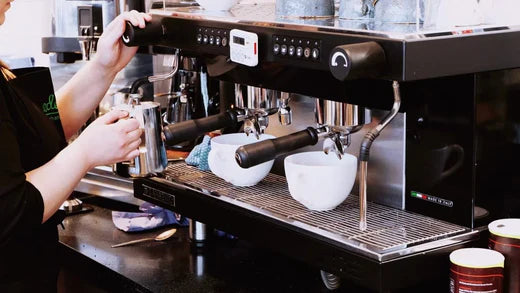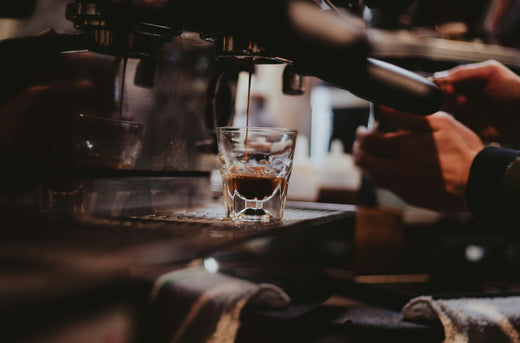Why Are Espresso Machines So Expensive?
Share
Picture this: You’re standing in your kitchen, coffee beans in hand, dreaming of the perfect shot of espresso—one that’s velvety, rich, and crowned with a lovely caramel-colored crema. You hop online and start shopping for an espresso maker, only to realize... these things can cost a small fortune! So, what’s the deal? Why do so many espresso machines come with a high price tag?
It’s not just one factor. It’s a whole symphony of reasons, from advanced technology and high-quality materials to the relatively low demand for them compared to regular coffee machines. Let’s peel back the layers and find out why these little powerhouses can be so pricey—and why they can still be a great investment.
1. Espresso = High Pressure + Hot Water + Precision
Let’s start with the heart of the matter: the brewing process itself. Espresso isn’t your everyday drip coffee; it’s an intense extraction method that forces hot water through finely ground coffee at around 9 bars of pressure (and some machines can go even higher). Achieving and maintaining that consistent high pressure is no small feat. It requires specialized pumps, heating elements, and precise temperature controls—plus all the internal tubing that won’t spring a leak when the pressure is on.
All this gear doesn’t come cheap. It has to be made of sturdy stuff like stainless steel or other high-quality materials to avoid leaks, corrosion, or worse. And that’s just for the basics! Want a steam wand for perfect frothy milk? That’s another piece of equipment (and engineering) that has to hold up under high temperatures and frequent use.
2. Quality Parts = Higher Prices
We’ve all seen those budget-friendly (a.k.a. “cheap espresso machine”) models that cost $100 or less, right? Sure, you can find them, but they’re often built with plastic parts, smaller pumps, and less robust components. They might do okay for a first time dip into espresso-making, but they usually won’t last a long time—and the consistency might leave a lot to be desired.
High-end espresso machines and commercial espresso machines, on the other hand, are often constructed with stainless steel frames, commercial-grade pumps, and PID controllers (which regulate temperature to keep every shot on point). These tough components and refined features ensure consistent performance for years, but that build quality ratchets up the price tag.
3. Advanced Tech for the Perfect Shot
Now let’s talk bells and whistles. Modern espresso machines come with a whole suite of additional features that might make your head spin:
- Built-in grinder: Some machines, like the popular Breville Barista Express, let you grind your own coffee beans on demand, ensuring maximum freshness.
- Automatic milk frother: Perfect for cappuccinos or lattes at the press of a button.
- Digital display: Adjust brew time, water temperature, and more—sometimes with a single tap.
- Programmable profiles: Want a super-strong espresso in the morning and a milder version at night? Many machines let you store multiple custom settings.
These advanced technologies are a big reason expensive espresso machines stand out from cheaper machines. When you’re controlling every variable—grind size, water flow, brew temperature, and steam wand pressure—you get more control over flavor. It’s like having your own personal barista station right on your countertop.
4. Commercial Origins
A lot of high-quality espresso machines are inspired by or straight-up modified from commercial machines you see in coffee shops. Those commercial espresso machines are designed to run all day, every day, dishing out hundreds of shots without missing a beat. They’re built tough, with more robust pumps, double boilers, and specialized group heads. When that same design trickles down into home espresso machines, it carries along all that heavy-duty engineering (and the cost that comes with it).
5. Brand Premium and R&D
Let’s be honest: brand reputation plays a huge role in pricing, whether we’re talking about coffee makers, sneakers, or cars. Popular names like Breville, De’Longhi, and Gaggia invest a ton in research & development. They’re constantly tweaking designs, testing prototypes, and incorporating new tech to improve taste, reliability, and ease of use. All that R&D adds up, and companies pass those costs on to the consumer.
Is it always worth paying the brand premium? Sometimes, yes. Bigger brands often have better warranties, replacement part availability, and proven customer service. For many coffee lovers, that peace of mind and consistent quality is worth the high price.
6. The Whole Low-Demand Thing
Compared to the masses of folks happily brewing with drip coffee or single-serve pod systems, the number of people shopping for a home espresso machine is smaller. Because this niche group of coffee enthusiasts is smaller, it’s not as cost-effective for manufacturers to mass-produce espresso machines the way they do basic coffee makers. So, we end up with a bit of a low demand cycle: fewer machines made, less economy of scale, and thus higher prices for the machines that do make it to market.
7. You Get What You Pay For (But You Don’t Have to Go Broke)
Here’s where we get casual: not everyone needs the best super automatic espresso machine with all the bells, whistles, and a built-in disco ball (kidding—maybe in the future!). If you’re on a limited budget or a tight budget, there are plenty of good espresso machine options under $200 or $300, including some semi-automatic espresso machines that let you hone your barista skills without taking out a second mortgage. The taste might not be as refined as the most expensive espresso machine on the market, but if you’re just starting out, it might be more than enough to pull some good shots at home.
And guess what? Even a French press is a great tool for coffee fans—though it doesn’t create espresso (it lacks the pressure). But if you’re curious about learning coffee techniques or trying out different types of coffee, a cheaper method can be a fun way to experiment before you invest in a real-deal espresso maker.
8. Maintenance Matters
One factor that often goes under the radar: regular maintenance. Espresso machines need cleaning, descaling, and sometimes part replacements (like gaskets or filters) to keep them running smoothly. High-quality machine components might be easier to maintain and more resistant to wear and tear, which can save you time, hassle, and money in the long run.
- Water Temperature: Hard water build-up can really mess with your brewer’s heating element. Descaling is essential.
- Steam Wand: Milk residue is a beast. Cleaning it thoroughly after each use ensures better foam and a longer machine lifespan.
- Brew Group: Keep those pathways free of coffee oils and residue for that consistent shot of espresso.
With expensive machines, you’re often paying for better engineering that allows for easier cleaning and replacement of internal parts—one of those “invisible perks” that might justify the cost when you’re deciding between two machines.
9. From Local Coffee Shop to Your Kitchen Counter
Ever wonder why your local coffee shop charges a chunk of change for espresso drinks? Those commercial machines can easily run into the thousands (or tens of thousands) of dollars. They’re engineering marvels designed for professional use. When you buy a home espresso machine modeled after that type of build quality, you essentially get a downscaled version of that commercial standard. That’s part of the good reason prices stay high: you’re paying for robust design, consistent performance, and the ability to replicate what the pros do.
10. Are They Worth It?
So, if you’re thinking about skipping your daily coffee run and investing in an own espresso machine, you might be wondering: Are espresso machines worth it? If you’re an avid coffee enthusiast or you just love the craftsmanship behind a great espresso, the answer is often “Heck yeah, they are!”
- Long-Term Savings: Daily coffee runs can add up fast. Over time, your machine can pay for itself.
- Customization: Tweak the grind size, water temperature, shot volume, and more. You’re basically your own baristo—or barista—at home.
- Taste Tests: Experiment with different coffee beans, roasts, or even blends. Try out darker roasts for more intense flavors, or lighter beans for floral and fruity notes.
- Convenience: No more lines at the café! You can make cappuccinos or lattes in your PJs at 6 am.
If you’re still on the fence, do the math on how many cups of coffee you buy monthly from your neighborhood café. If that cost rivals a machine payment or two, it might be time to bring that coffee magic in-house.
11. Tips for Buying the Right Espresso Machine
-
Set Your Price Points
Decide how much you can realistically spend. There’s a big gap between entry-level cheaper machines and high-end espresso machines that cost thousands. -
Consider Your Skill Level
If you’re a newbie, a semi-automatic espresso machine can strike the perfect balance between control and convenience. If you want to just press a button and go, look at automatic coffee machines. -
Check the Steam Wand
Love lattes and cappuccinos? Make sure you get a machine with a flexible, easy-to-use steam wand or an automatic milk frother. -
Think About Size
Some machines are absolute beasts. Measure your counter space and check each machine’s dimensions. -
Look for Durability
Search for models with a stainless steel boiler and proven build quality. Read reviews, watch YouTube demos, and see how others have fared. -
Built-In Grinder vs. Separate Grinder
A built-in grinder can be super handy (and can save space), but a standalone burr grinder might offer more control. Consider how hands-on you want to be. -
Ease of Maintenance
Is it simple to take apart and clean the brew group or the portafilter? Do you have to flush the machine often or descale monthly? The more user-friendly, the better. -
Warranty & Support
Check the warranty length and what it covers. Good service can make or break your experience—especially if something goes wrong down the road.
12. From Moka Pots to High-End Espresso Machines
If you’re not ready to jump straight into a thousand-dollar piece of coffee tech, you’ve got other fun ways to enjoy espresso-like drinks. Moka pots (stovetop espresso makers) use steam pressure—just not as high as espresso machines. They’re affordable, compact, and produce a strong cup that’s partway between drip coffee and true espresso. Is it the real thing? Not quite, but it’s definitely an upgrade from your basic coffee maker if you love that intense flavor.
Wrap-Up: Invest Wisely, Brew Happily
At the end of the day, why are espresso machines so expensive? Because they pack a ton of specialized engineering—high pressure, hot water, stainless steel, advanced tech, and more—into a fairly small machine. Add in the smaller consumer market and the fact that many are modeled after commercial machines, and you’ve got a recipe for hefty price points.
But don’t let higher prices intimidate you if you’re a true coffee lover or an aspiring home barista. A well-chosen espresso machine can be a great investment in the long run. It’ll let you craft your own specialty drinks, save money on café visits, and elevate your coffee experience to new heights. After all, life’s too short to settle for mediocre brews!
At Flight Brew Coffee, we believe in fueling your passions—whether you’re up in the sky or working on your morning espresso routine. Ready to graduate from a simple French press to a feature-packed espresso maker? We say go for it! Embrace the process, practice your barista skills, and get ready to taste the difference high-pressure brewing can make.
Have more questions? Hit us up! We’re here to help you navigate the coffee world, one shot at a time. Cheers to brewing better—and more affordably—at home.



